|
Texas Revolution and Texas War of Independence
"Texas Revolution and Texas Independence History..."
The Texas Revolution History and Texas War of Independence
History
Introduction
The Texas Revolution, commonly referred to as the Texas War of
Independence, was the military conflict between the government of Mexico and Texas colonists that began October 2, 1835, and
resulted in the establishment of the Republic of Texas after the final battle on April 21, 1836. Mexico's refusal to recognize
the Republic of Texas (1836-1846) and its continual border disputes with the United States caused intermittent conflicts between
the two nations during the 1840s. With the annexation of Texas by the United States as the 28th State on December 29,
1845, tensions increased before being resolved on the battlefields of the Mexican–American War of 1846-1848
(aka US - Mexican War).
As the nation rapidly acquired large amounts of real estate
and spanned from sea to shining sea, slavery was placed on center state as both houses debated its expansion into the new
territories. The subject was settled with Texas, because it had entered the Union as a slave state.
| Texas Revolution Map |
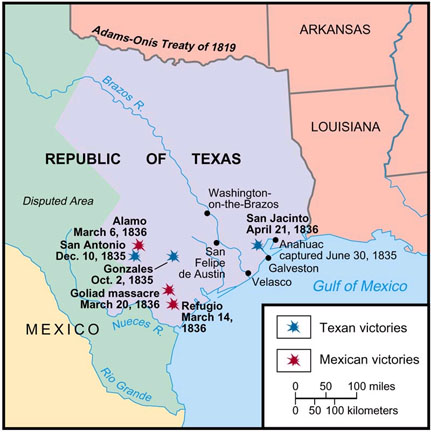
|
| Texas War of Independence Map |
Texas War of Independence and Texas
Revolution Timeline
Texas Revolution, aka Texas War
of Independence (October 2, 1835 - April 21, 1836)
Battle of the Alamo (February 23 – March 6, 1836)
Texas Independence
from Mexico (March 2, 1836)
Republic of Texas (March 2, 1836, to February 19, 1846)
Annexation and State of Texas simultaneously
granted by the United States of America (December 29, 1845)
Annexation by the United States of America (Drafted February
27, 1844; Signed December 29, 1845; Effective February 19, 1846)
Statehood by the United States of America Drafted February
27, 1844; Signed December 29, 1845; Effective February 19, 1846)
Mexican–American War (April 25, 1846 – February
2, 1848)
Mexico officially recognizes Texas in Treaty of Guadalupe Hidalgo (February 2, 1848)
Mexican Cession is an
informal name given to the land and territory ceded to the United States in the Treaty of Guadalupe Hidalgo (February 2, 1848)
Setting the Stage
The Mexican War for Independence
(1810–1821) severed control that Spain had exercised on its North American territories, and the new country of Mexico
was formed from much of the individual territory that had comprised New Spain. On October 4, 1824, Mexico adopted a new constitution
which defined the country as a federal republic with nineteen states and four territories. The former province of Spanish
Texas became part of a newly created state, Coahuila y Tejas, whose capital was at Saltillo, hundreds of miles from the former
Texas capital, San Antonio de Bexar (now San Antonio, Texas, USA).
The new country emerged
essentially bankrupt from the war against Spain. With little money for the military, Mexico encouraged settlers to create
their own militias for protection against hostile Indian tribes. Texas was very sparsely populated and in the hope that an
influx of settlers could control the Indian raids, the government liberalized immigration policies for the region. The first
group of colonists, known as the Old Three Hundred, had arrived in 1822 to settle an empresarial grant that had been given
to Stephen F. Austin. Of the 24 empresarios, only one settled citizens from within the Mexican interior; most of the remaining
settlers came from the United States.
The Mexican-born settlers
in Texas were soon vastly outnumbered by people born in the United States. To address this situation, President Anastasio
Bustamante implemented several measures on April 6, 1830. Chief among these was a prohibition against further immigration
to Tejas from the United States, although American citizens would be allowed to settle in other parts of Mexico. Furthermore,
the property tax law, intended to exempt immigrants from paying taxes for ten years, was rescinded, and tariffs were increased
on goods shipped from the United States. Bustamante also ordered all Tejas settlers to comply with the federal prohibition
against slavery or face military intervention. These measures did not have the intended effect. Settlers simply circumvented
or ignored the laws. By 1834, it was estimated that over 30,000 Anglos lived in Coahuila y Tejas. compared to only 7,800 Mexican-born
citizens. By 1836, there were approximately 5,000 slaves in Texas.
| (Map) Texas War of Independence, Texas Revolution |
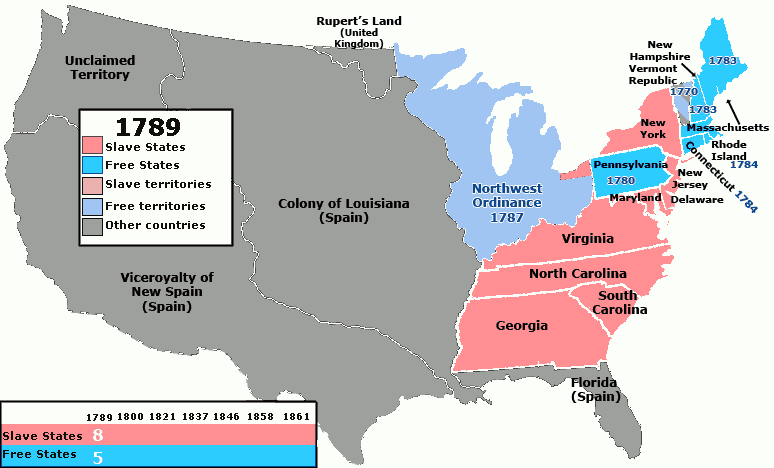
|
| (Map) Texas War of Independence, Texas Revolution, Texas Republic to Annexation to State of Texas |
| Texas Independence History Map |
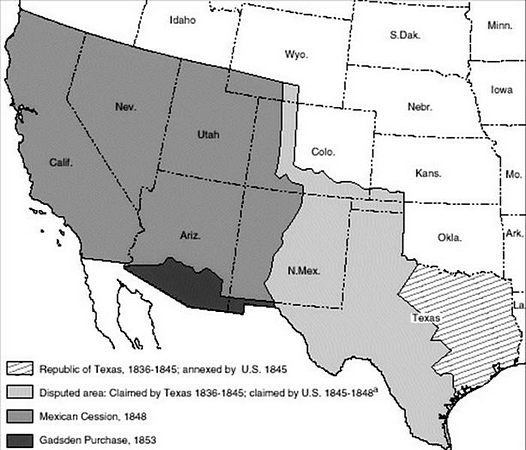
|
| Territorial Evolution of Texas Map |
Long-running political
and cultural clashes between the Mexican government and the settlers in Texas were exacerbated after conservative forces took
control and the Siete Leyes (Seven Laws) of 1835 were approved. It displaced the federal Constitution of 1824 with the 1835
Constitution of Mexico, thereby ending the federal system and establishing a provisional centralized government in its place.
The new laws were unpopular throughout Mexico, leading to secession movements and violence in several Mexican states.
| Texas Revolution and Texas Republic Map |
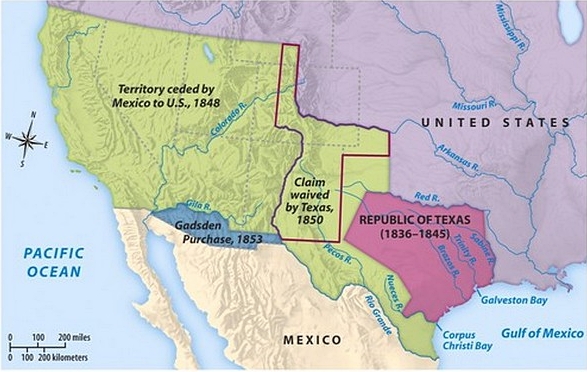
|
| Texas Revolution and War of Independence Map |
Fighting begins
The Texas Revolution began
with the Battle of Gonzales on October 2, 1835, and ended with the Battle of San Jacinto on April 21, 1836. There were, however,
earlier clashes between Mexican forces and groups of colonists, so it is impossible to set dogmatic limits for the Revolution.
The Texas Revolution, nevertheless,
experienced the following battles and skirmshes: Gonzales, Goliad, Lipantitlán,
Concepción, Grass Fight, Béxar, San Patricio, Agua Dulce, The Alamo, Refugio, Coleto, and San Jacinto.
Warfare began in Texas
on October 2, 1835, with the Battle of Gonzales. Early Texan Army successes at La Bahía and San Antonio (Battle of Goliad,
Siege of Béxar) were soon reversed when the Mexican Army retook the territory a few months later (Battle of Coleto, Battle
of the Alamo). The war ended at the Battle of San Jacinto, where the Texian army under General Sam Houston routed the Mexican
forces with a surprise attack.
Within
Mexico, tensions continued between federalists and centralists. In early 1835, wary Texians formed Committees of Correspondence
and Safety. The unrest erupted into armed conflict in late 1835 at the Battle of Gonzales. This launched the Texas Revolution,
and over the next two months, the Texians defeated all Mexican troops in the region. Texians elected delegates to the Consultation,
which created a provisional government. The provisional government soon collapsed from infighting, and Texas was without clear
governance for the first two months of 1836.
| Texas Revolution Map : Texas War of Independence |
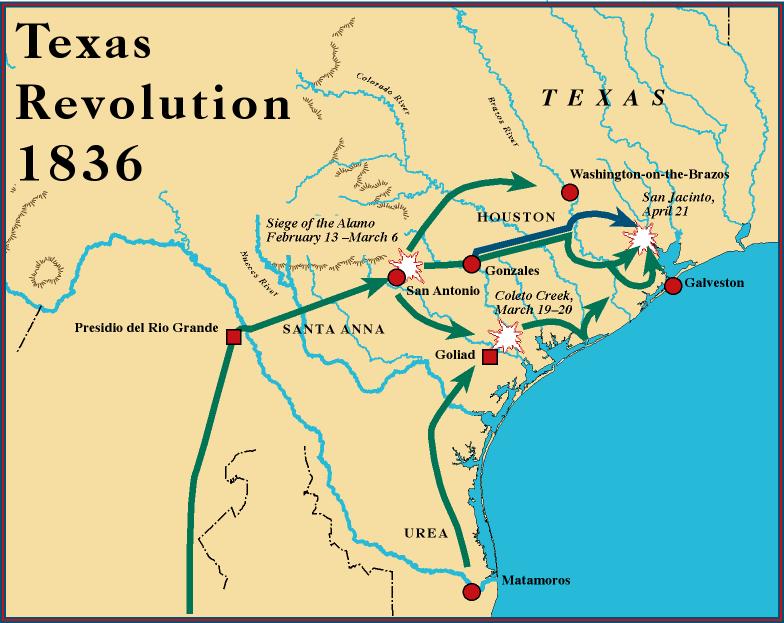
|
| Texas Revolution Map : Texas War of Independence Map of Battles |
During this time of
political turmoil, Mexican President Antonio Lopez de Santa Anna personally led an army to end the revolt. The Mexican expedition
was initially successful. General Jose de Urrea defeated all the Texian resistance along the coast culminating in the Goliad
Massacre. Santa Anna's forces, after a thirteen-day siege, overwhelmed Texian defenders at the Battle of the Alamo. News of
the defeats sparked panic amongst Texas settlers.
The newly elected Texian delegates to the Convention of 1836 quickly
signed a Declaration of Independence on March 2, forming the Republic of Texas. After electing interim officers, the Convention
disbanded. The new government joined the other settlers in Texas in the Runaway Scrape, fleeing from the approaching Mexican
army. After several weeks of retreat, the Texian Army commanded by Sam Houston attacked and defeated Santa Anna's forces at
the Battle of San Jacinto. Santa Anna was captured and forced to sign the Treaties of Velasco, ending the war.
While
Texas had won their independence, political battles raged between two factions of the new Republic. The nationalist faction,
led by Mirabeau B. Lamar, advocated the continued independence of Texas, the expulsion of the Native Americans, and the expansion
of the Republic to the Pacific Ocean. Their opponents, led by Sam Houston, advocated the annexation of Texas to the United
States and peaceful co-existence with Native Americans. The conflict between the factions was typified by an incident known
as the Texas Archive War.
Mexico launched two small expeditions into Texas in 1842. The town of San Antonio was captured
twice and Texans were defeated in battle in the Dawson Massacre. Despite these successes, Mexico did not keep an occupying
force in Texas, and the republic survived. The republic's inability to defend itself added momentum to Texas's eventual annexation
into the United States.
| (Map)Texas War of Independence and Texas Republic |
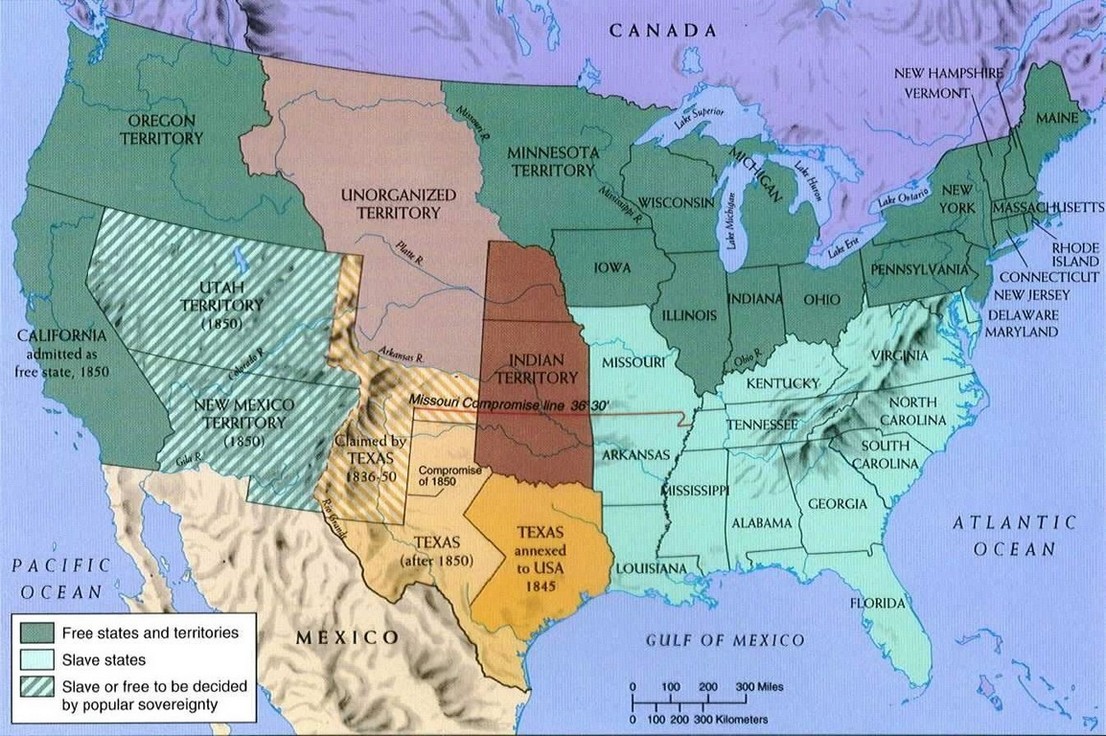
|
| Map of Texas Independence, Texas Revolution, Texas Republic |
| Texas Revolution Timeline Map |
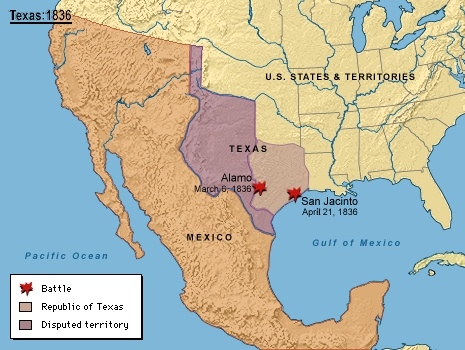
|
| Texas War of Independence Map |
Analysis
The Texas Revolution
or Texas War of Independence was an armed conflict between Mexico and settlers in the Texas portion of the Mexican state of
Coahuila y Tejas. The war lasted from October 2, 1835 to April 21, 1836. However, a war at sea between Mexico and Texas would
continue into the 1840s. Animosity between the Mexican government and the American settlers in Texas, as well as many Texas
residents of Mexican ancestry, began with the Siete Leyes of 1835, when Mexican President and General Antonio López de Santa
Anna abolished the federal Constitution of 1824 and proclaimed the more centralizing 1835 constitution in its place.
New laws enacted by a centralized government in Mexico were unpopular and
led to secession movements and violence in several Mexican states. War began in Texas on October 2, 1835, with the Battle
of Gonzales. Early Texian Army successes at La Bahia and San Antonio were soon met with crushing defeat at the same locations
a few months later. The war ended at the Battle of San Jacinto where General Sam Houston led the Texan Army to victory over
a portion of the Mexican Army under Santa Anna, who was captured shortly after the battle. The conclusion of the war resulted
in the creation of the Republic of Texas in 1836.
With Santa Anna a prisoner,
his captors forced him to sign the Treaties of Velasco on May 14, 1836. The treaty recognized Texas' independence and guaranteed
Santa Anna's life. The initial plan was to send him back to Mexico to help smooth relations between the two states. His departure
was delayed by a mob who wanted him dead. Santa Anna, declaring himself as the only person who could bring about peace, was
sent to Washington, D.C., by the Texas government to meet President Jackson in order to guarantee independence of the new
republic. But unknown to Santa Anna, the Mexican government deposed him in absentia; thus, he no longer had any authority
to represent Mexico. The Treaty of Velasco was never ratified in Mexico, and from the end of the revolution to roughly the
beginning of the Mexican-American War, the Texas navy was tasked with forcing the Mexican Government to accept Texas independence.
Although fighting between the Mexican and Texian armies ceased for the time being, battles on water and on the coast continued.
Some of the notable naval conflicts were the Battle of Brazos
River, the Battle of Galveston Harbor and the Naval Battle of Campeche.
| Texas Revolution Map |
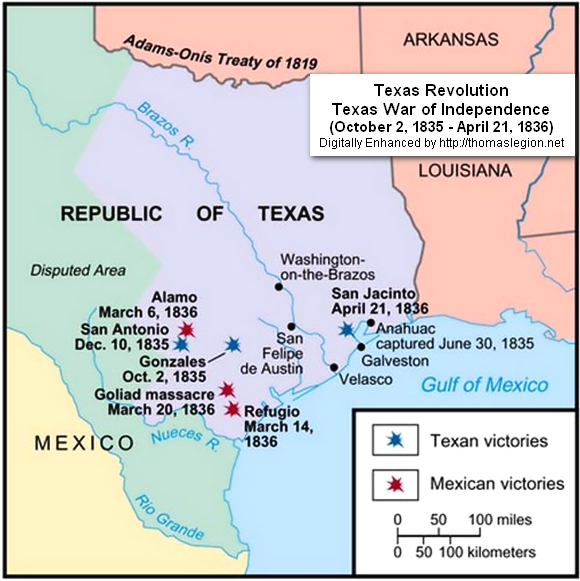
|
| Texas War of Independence Map |
Santa Anna re-emerged as
a hero during the Pastry War in 1838. He was re-elected President, and in early 1842 under his orders, expeditions into Texas
were led by Ráfael Vásquez with 500 men, then General Adrian Woll with 1,400 men. Mexican troops commanded by Vasquez occupied
Goliad, Refugio, and Victoria and, on March 5, entered San Antonio. On March 15, a Texian militia gathered in San Antonio
only to find the Mexican troops had left. On September 11, 1842, Woll's troops occupied San Antonio. On September 17 or 18,
over 200 Texian militia under Mathew Caldwell ambushed 500 of Woll's troops and won the Battle of Salado Creek. 53 Texians
responding to Caldwell's call for reinforcements were surprised near Salado Creek and killed, many in cold blood after surrendering,
in the Dawson Massacre. Woll retreated to Mexico with many hostages, including the local judge, clerk, district attorney and
all attorneys attending the court session. These hostages remained in captivity for several years. Texian's pursuing the Mexicans
and seeking retribution included the ill-fated Mier Expedition.
Small clashes arose between
the two countries for several years afterward. The war between Texas and Mexico did not truly come to an end until the Mexican-American
War of 1846.
Sam Houston's victory at
San Jacinto would earn him the presidency of Republic of Texas twice. He later became a U.S. senator and governor of Texas.
Stephen F. Austin, after a lost bid for Texas's presidency in 1836, was appointed Secretary of State but died two months later.
Sam Houston eulogized Austin as the "Father of Texas". (See also TEXAS HOMEPAGE: Texas Revolution; Texas Independence; Republic
of Texas; Texas Annexation; Texas Statehood.)
Texas Annexation
In 1845, the United States of
America annexed the Republic of Texas and admitted it to the Union as the 28th state. The U.S. thus inherited Texas's border
dispute with Mexico; this quickly led to the Mexican-American War, during which the U.S. captured additional territory (known
as the Mexican Cession of 1848), extending the nation's borders all the way to the Pacific Ocean. Texas claimed the eastern
part of this new territory, comprising parts of present-day Colorado, Kansas, New Mexico, Texas, Wyoming, Utah, and Oklahoma.
The resulting dispute among Texas, the federal government, and New Mexico Territory was resolved in the Compromise of 1850,
when much of these lands became parts of other territories of the United States in exchange for the U.S. federal government
assuming the Texas Republic's $10 million in debt.
| Map of Texas Revolution and War of Independence |
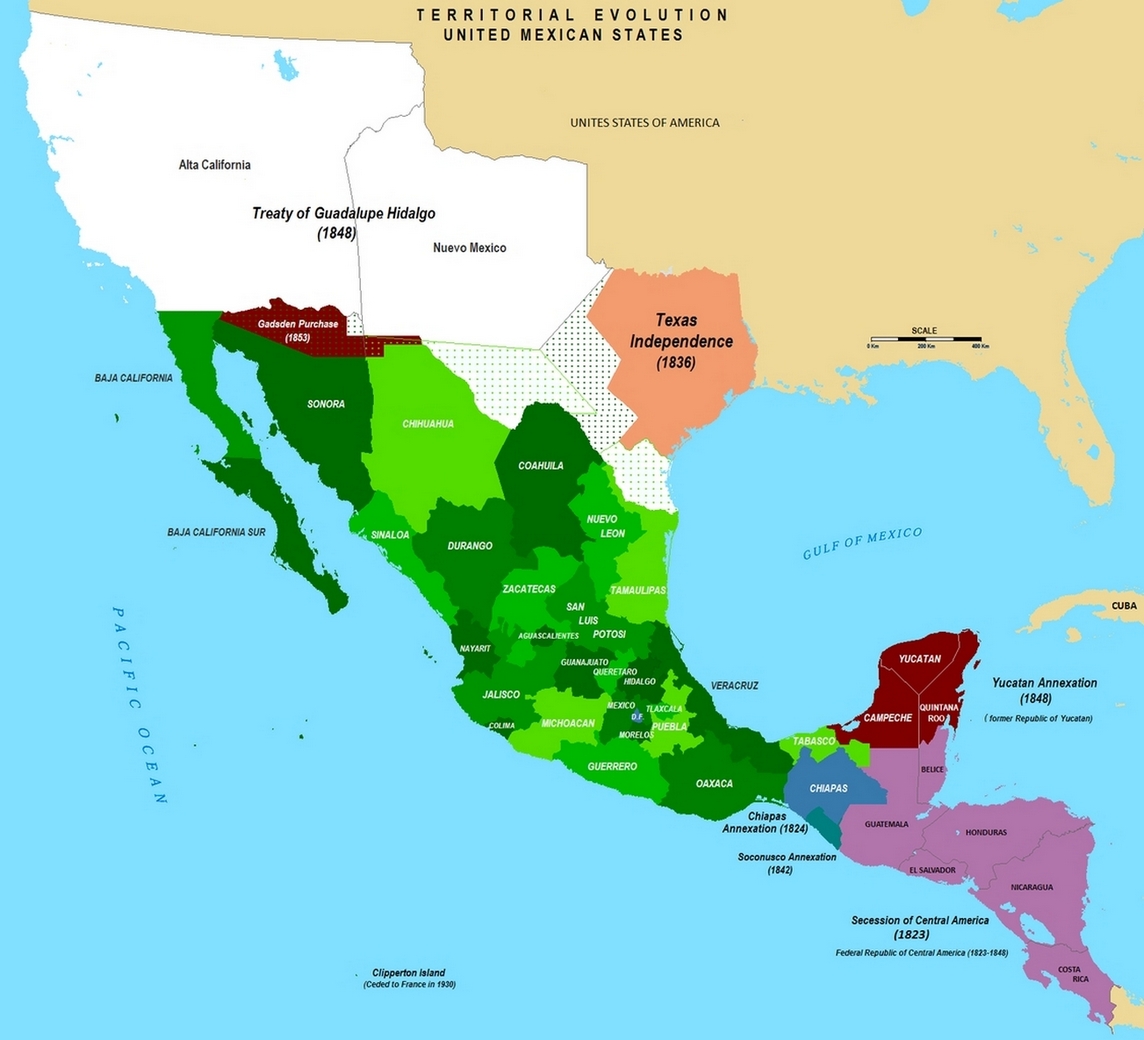
|
| (Map) Texas War of Independence, Republic of Texas, Texas Annexation, and Texas Statehood |
| Texas Map |
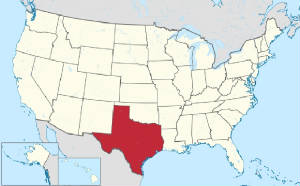
|
| Map of Texas |
Texas Statehood
As
early as 1837, the Republic made several attempts to negotiate annexation with the United States. Opposition within the republic
from the nationalist faction, along with strong abolitionist opposition within the United States, slowed Texas's admission
into the Union. Texas was finally annexed when the expansionist James K. Polk won the election of 1844. On December 29, 1845,
Congress admitted Texas to the U.S. as a constituent state of the Union.
After Texas's annexation, Mexico broke diplomatic
relations with the United States. While the United States claimed that Texas's border stretched to the Rio Grande, Mexico
claimed it was the Nueces River. While the former Republic of Texas could not enforce its border claims, the United States
had the military strength and the political will to do so. President Polk ordered General Zachary Taylor south to the Rio
Grande on January 13, 1846. A few months later Mexican troops routed an American cavalry patrol in the disputed area in the
Thornton Affair starting the Mexican-American War. The first battles of the war were fought in Texas: the Siege of Fort Texas,
Battle of Palo Alto and Battle of Resaca de la Palma. After these decisive victories, the United States invaded Mexican territory
ending the fighting in Texas.
After a series of United States victories, the Treaty of Guadalupe Hidalgo ended the
two year war. In return, for US$18,250,000, Mexico gave the U.S. undisputed control of Texas, ceded the Mexican Cession in
1848, most of which today is called the American Southwest, and Texas's borders were established at the Rio Grande.
The
Compromise of 1850 set Texas's boundaries at their present form. Texas ceded its claims to land which later became half of
present day New Mexico, a third of Colorado, and small portions of Kansas, Oklahoma, and Wyoming to the federal government,
in return for the assumption of $10 million of the old republic's debt. Post-war Texas grew rapidly as migrants poured into
the cotton lands of the state. (See also TEXAS HOMEPAGE: Texas Revolution; Texas Independence; Republic
of Texas; Texas Annexation; Texas Statehood.)
(Sources and related reading below.)
Recommended Reading: Battle of the Alamo; Texas Revolution; Texas War of Independence:
Sources: Barr, Alwyn (1996), Black Texans: A history of African Americans
in Texas, 1528–1995 (2nd ed.), Norman, OK: University of Oklahoma Press, ISBN 0-8061-2878-X; Barr, Alwyn
(1990), Texans in Revolt: the Battle for San Antonio, 1835, Austin, TX: University of Texas Press, ISBN 0-292-77042-1, OCLC
20354408; Brands, H.W. (2005), Lone Star Nation: The Epic Story of the Battle for Texas Independence, 1835, New York:
Random House, Inc., ISBN 1-4000-3070-6; Castaneda, H.W. (1970), The Mexican Side of the Texas Revolution, Texas: Graphic
Ideas, ASIN B003M0PG1S; Davis, William C., Lone Star Rising: The Revolutionary Birth of the Texas Republic, Free Press
(2004) ISBN 0-684-86510-6; del la Teja, Jesus (1991), A Revolution Remembered: The Memoirs and Selected Correspondence
of Juan N. Seguin, Austin, TX: State House Press, ISBN 0-938349-68-6; Edmondson, J.R. (2000), The Alamo Story-From History
to Current Conflicts, Plano, TX: Republic of Texas Press, ISBN 1-55622-678-0; Fehrenbach, T. R. (2000), Lone Star: a
history of Texas and the Texans, Da Capo Press, ISBN 0-306-80942-7, 9780306809422; Groneman, Bill (1998), Battlefields of
Texas, Plano, TX: Republic of Texas Press, ISBN 978-1-55622-571-0; Hardin, Stephen L. (1994), Texian Iliad – A
Military History of the Texas Revolution, Austin, TX: University of Texas Press, ISBN 0-292-73086-1, OCLC 29704011; Huson,
Hobart (1974), Captain Phillip Dimmitt's Commandancy of Goliad, 1835–1836: An Episode of the Mexican Federalist War
in Texas, Usually Referred to as the Texian Revolution, Austin, TX: Von Boeckmann-Jones Co.; Lack, Paul D. (1992), The
Texas Revolutionary Experience: A Political and Social History 1835–1836, College Station, TX: Texas A&M University
Press, ISBN 0-89096-497-1; Lord, Walter, A Time to Stand,; Lincoln: University of Nebraska Press (1961) ISBN 0-8032-7902-7; Manchaca,
Martha (2001), Recovering History, Constructing Race: The Indian, Black, and White Roots of Mexican Americans, The Joe R.
and Teresa Lozano Long Series in Latin American and Latino Art and Culture, Austin, TX: University of Texas Press, ISBN 0-292-75253-9; Nofi,
Albert A., The Alamo and The Texas War for Independence, Da Capo Press (1992) ISBN 0-306-81040-9; Santos, Richard G.
(First Edition, 1968), Santa Anna's campaign against Texas, 1835-1836;: Featuring the field commands issued to Major General
Vicente Filisola, Texian Press, ASIN B0006BV0Y8; Schwaller, John Frederick (February 22, 2011), The History of the Catholic
Church in Latin America: From Conquest to Revolution and Beyond,, NYU Press, ISBN 0-8147-4003-0; Scott, Robert
(2000), After the Alamo, Plano, Texas: Republic of Texas Press, ISBN 978-0-585-22788-7; Todish, Timothy J.; Todish, Terry;
Spring, Ted (1998), Alamo Sourcebook, 1836: A Comprehensive Guide to the Battle of the Alamo and the Texas Revolution, Austin,
TX: Eakin Press, ISBN 978-1-57168-152-2; Winders, Richard Bruce (2004), Sacrificed at the Alamo: Tragedy and Triumph
in the Texas Revolution, Austin, TX: State House Press, ISBN 1-880510-81-2.
|

